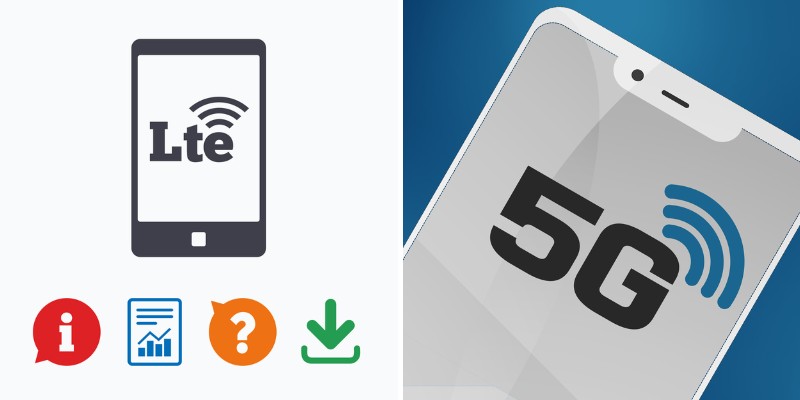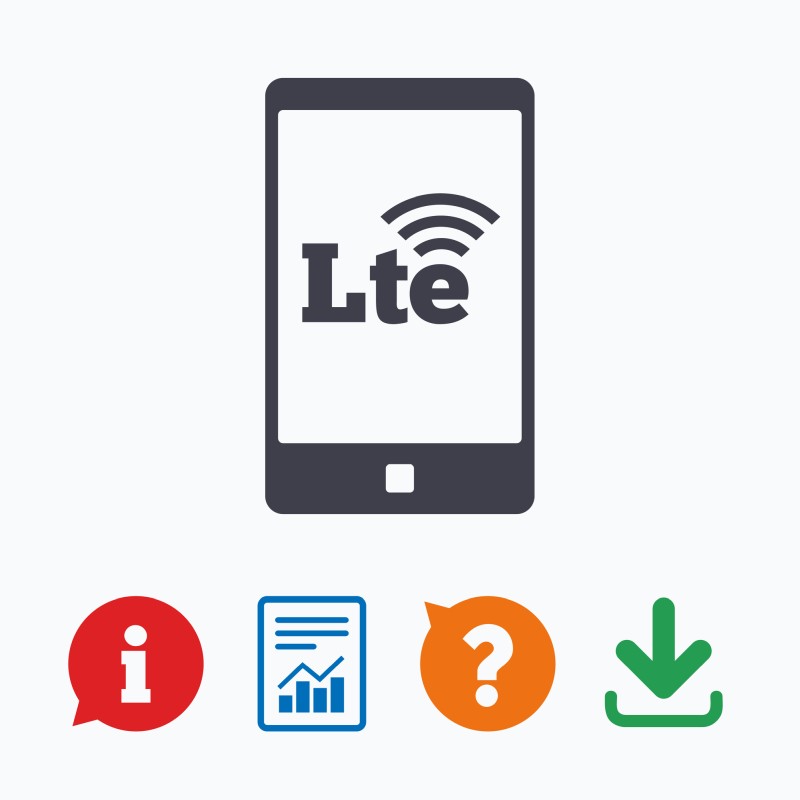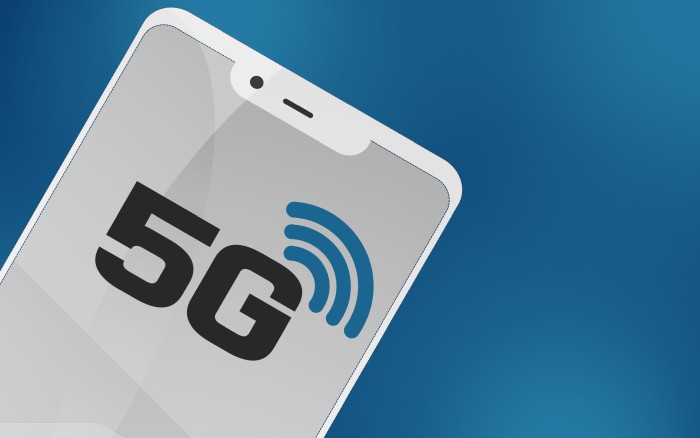Ever since going mainstream in the early 1990s, cellular phones and the wireless networks that make them possible have advanced tremendously.

All of those advances, however, spawned a massive dictionary’s worth of jargon to describe it all.
For end users, this can create confusion over which phones use which technologies, why that is, and what the difference is.
One common question plenty of cellular phone owners now ask is why their phones display the LTE logo instead of the 5G logo next to their signal indicators some or all of the time. Here’s a thorough explanation to answer that question.
Why a Phone Might Say LTE Instead of 5G
There are only two reasons why a cellular phone would say LTE instead of 5G.
One is that the phone isn’t capable of connecting to a 5G network, and the other is that a 5G network isn’t available, and the phone has connected to the LTE network as a fallback.
In the first case, it’s a technical limitation of the phone, remedied only by purchasing a new, more modern one.
In the second case, it means that your specific cell phone company isn’t providing 5G service at your location, or its network isn’t reaching where you are for one reason or another.
So What Is LTE, Anyway?
LTE stands for long-term evolution. In cellular phone speak, it’s a blanket term that describes a variety of advanced versions of cellular networks.

It is not, however, 4G, as is commonly believed. Here’s where things get a little murky, though.
Depending on your specific cellular provider—and which year you’re talking about—the term LTE could mean a few different things.
For all of them, it has its origins back in 2008, when the International Telecommunication Union (ITU) published the first official 4G standard.
At that point, a cellular network had to be capable of download speeds of up to 100 Mbps to qualify as a 4G network.
Not to miss out on a marketing opportunity, most American cellular carriers jumped on the chance to make minor upgrades to their 3G networks and label them as 4G.
The trouble is that none of the carriers at the time had networks capable of true 4G data throughput.
That’s when the term LTE first appeared. It stood for Long-Term Evolution because it represented the upgrade path the cellular networks would take to get from upgraded 3G to true 4G capabilities.
So, depending on the year, a cellular network labeled LTE could provide anywhere between 3Mbps download speeds and the true 4G standard of 100 Mbps download speeds.
When you see the LTE designation on your cellular phone, it means you’re connected to one of those network variants.
However, if you have a phone that displays something like LTE+ or LTE-A, you’re in luck. Those mean you’re connected to a cellular network capable of true 4G throughput.
So What Is 5G?
Fortunately, the term 5G is far easier to understand. It stands for fifth-generation, meaning that it’s the fifth major cellular network upgrade since the original.

And this time, the major carriers are doing their best not to muddy the waters by advertising services that aren’t true 5G.
As a technology, however, 5G networks are more complex than their predecessors.
So, there’s no simple download speed designation you can use to define it. In fact, the available speeds on a 5G network depend on which frequency your phone uses to connect.
That’s because 5G networks rely on three different distinct frequency bands to provide coverage.
The first is an ultra-high frequency grouping called millimeter wave. It can deliver download speeds up to 1Gbps or more for cellular devices.
However, the signals don’t travel very far and have difficulty passing through walls and other obstructions. In the real world, this means your phone’s unlikely to use this type of service often, if at all.
The second frequency band is a low band that’s similar to existing 4G networks. It’s great at covering vast distances and providing solid signal strength inside buildings and through obstructions.
And, since the technology that makes it work is more advanced, low-band 5G will give you speeds that beat 4G networks, although not by very much.
The final frequency grouping falls right in between the previous two. That means it also provides something of a hybrid of the capabilities of the other two bands.
In this case, mid-band 5G covers distances well and deals with walls and obstructions well, too. However, it offers speeds that hover around the 400 Mbps range, making it around four times as fast as any 4G network operating today.
Why Does My Phone Have LTE and Not 5G?
If you have a phone that’s displaying the LTE symbol or any of its variants, it means it’s connected to an LTE network.
If you purchased your phone prior to 2019, this is almost certainly because it doesn’t have the cellular radio required to connect to a 5G network.
Phones with newer, 5G-capable radios didn’t hit the market until February 2019 and weren’t widely available to the public until later that year.
Unfortunately, there’s no way to upgrade a phone to make it capable of connecting to a newer 5G network.
So, if your phone can’t do it, you’ll need to upgrade to a new phone. If you do, be sure to check on the capabilities of your new phone to see if it includes a 5G radio.
If you have a phone that’s capable of using a 5G network, but it’s displaying the LTE symbol anyway, you’ve got a different issue.
However, it’s not necessarily a problem, per se. It simply means that the phone can’t find a 5G signal, or that it’s determined that a nearby 4G network offers a more stable connection.
Right now, the major cellular carriers aren’t finished building out their 5G networks. So, your phone will continue to use the LTE network as a fallback when necessary.
If it does this only once in a while, it’s nothing to worry about. It likely means the 5G coverage in your area isn’t quite complete yet.
However, if your 5G-capable phone never connects to a 5G network, it’s probably a sign that something’s wrong with your phone. Or that you’ve picked a cellular carrier that provides shoddy 5G service.
What’s the Difference Between 4G/LTE and 5G?
At the time of this writing, you may have a hard time telling the difference between the various 4G LTE flavors and the newer 5G networks.
The main distinguishing factor is download speed. On average, phones connected to an LTE network in the US will see download speeds between 29 and 62 Mbps, depending on the carrier.
However, most 5G users won’t see much of an improvement yet. This is especially true for users of Verizon and AT&T 5G phones.
Those users now see an average download speed between 54 and 60 Mbps. However, T-Mobile users should see a huge difference, with that network providing an average of 187 Mbps download speeds to its 5G users.
The Takeaway
So, now you know the difference between LTE and 5G cellular networks and what those symbols mean on your phone. And you also know that the differences between the two are still mostly theoretical right now.
It won’t stay that way forever, though. As carriers continue to improve their 5G coverage and add more cell sites that support millimeter wave frequencies, 5G users will start seeing a vast improvement over LTE networks.
So, if you’ve got a 5G phone that insists on using LTE, don’t ignore the problem for long. And if your phone can’t use 5G networks at all, it’s well past time to start thinking about an upgrade.
Leave a Reply